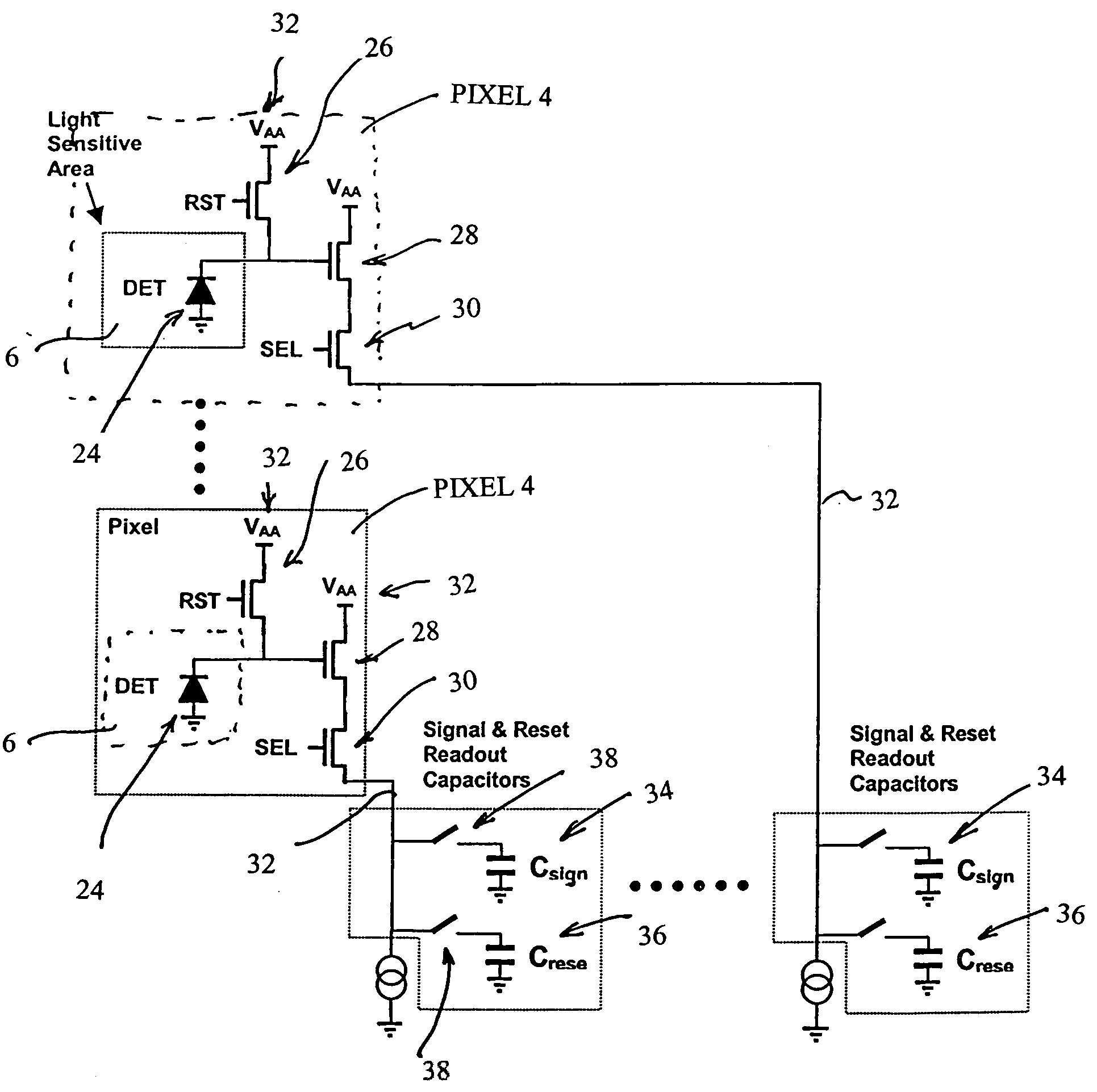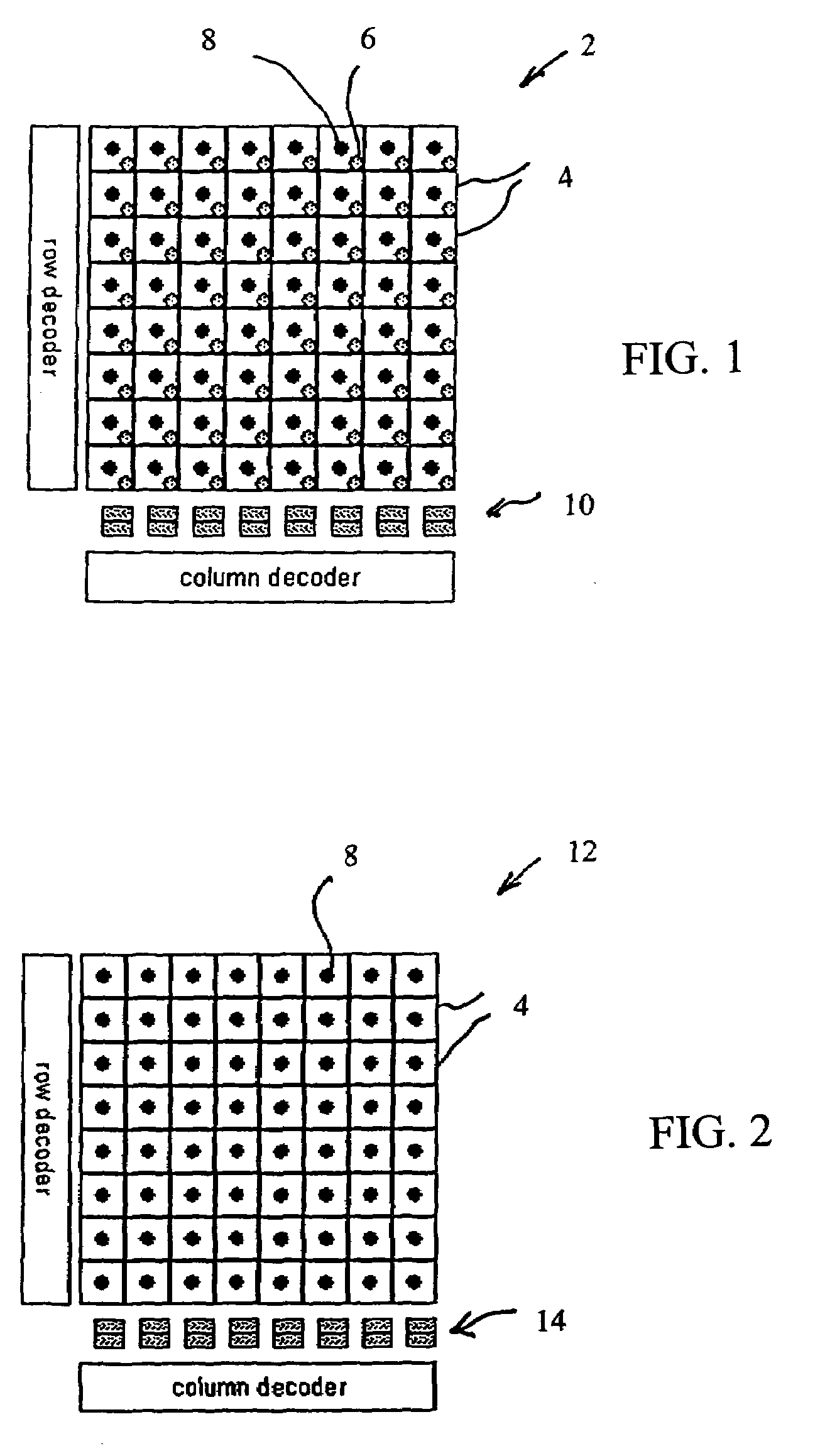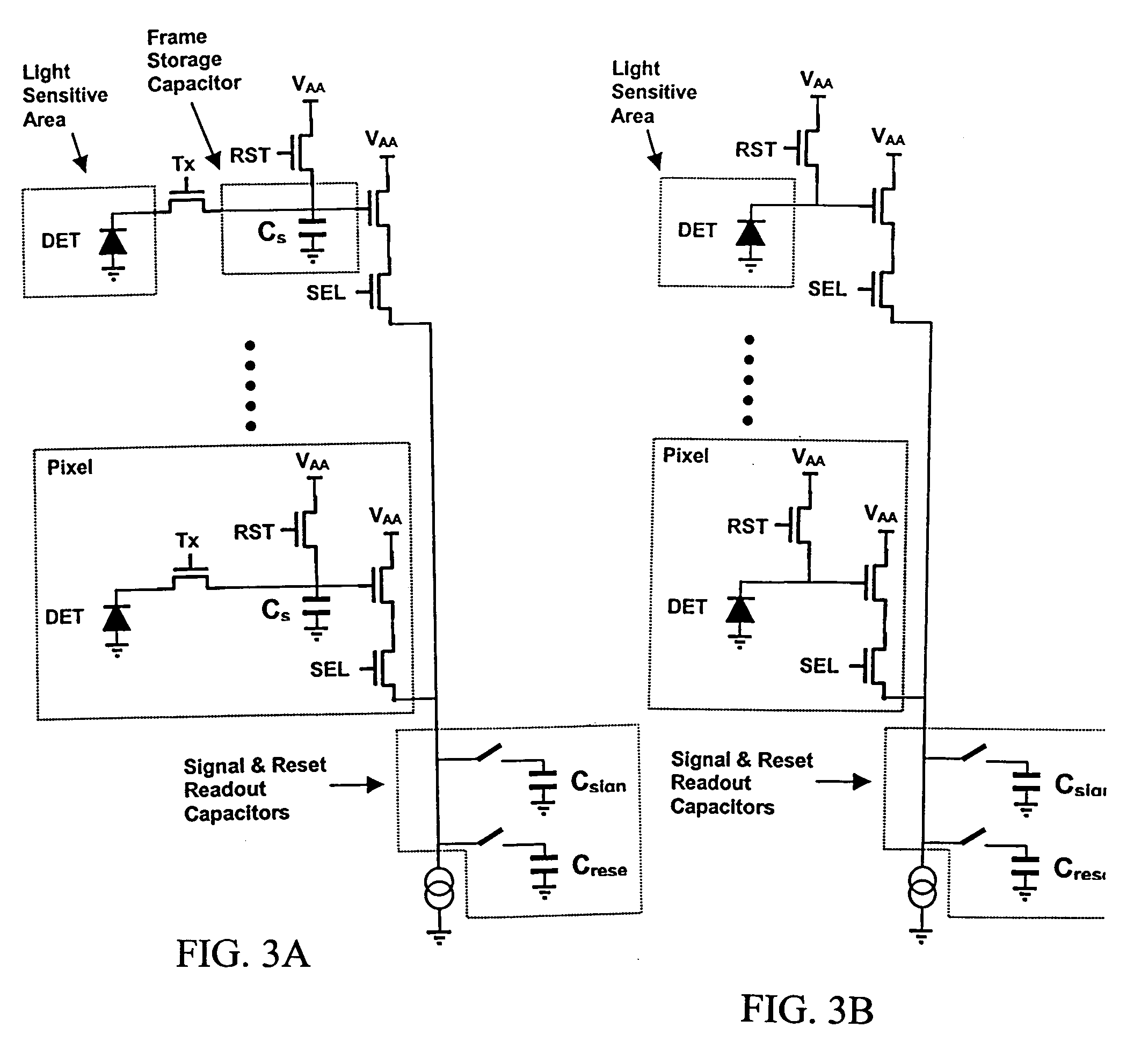Frame-shuttered CMOS image sensor with simultaneous array readout
a cmos image sensor and array readout technology, applied in the field of frame shuttered cmos image sensor with simultaneous array readout, can solve the problems of high cost, insufficient scale, and high cost of foundries using specialized and expensive processes, and achieve the effect of low cost and low cos
- Summary
- Abstract
- Description
- Claims
- Application Information
AI Technical Summary
Benefits of technology
Problems solved by technology
Method used
Image
Examples
Embodiment Construction
Simultaneous Array Readout
[0035]FIG. 6 shows a possible implementation of our Simultaneous Array Readout. This is an 8×8 pixel array 16 useful as a very high-speed, very low-cost optical sensor useful for applications such as the sensor in an optical mouse for a personal computer or a video game. Individual pixels are indicated at 4 and the pixel photodiode sensitive region is shown at 6. Preferred locations of signal readout and reset circuitry are shown at 18. Locations of column decoders are shown at 20.
[0036]FIG. 7 shows a preferred implementation of this architecture in schematic form. For this example, an 8 by 8 pixel array 16 is indicated. Two pixels 4 of the array are shown in schematic detail and the other 62 pixels are represented by dots. Each pixel includes a light sensitive region 6 formed with a PIN diode junction 24. Each pixel also includes a reset transistor (RST) 26 that is operated by the application of a reset signal at the gate of the transistor to apply a reset...
PUM
 Login to View More
Login to View More Abstract
Description
Claims
Application Information
 Login to View More
Login to View More - R&D
- Intellectual Property
- Life Sciences
- Materials
- Tech Scout
- Unparalleled Data Quality
- Higher Quality Content
- 60% Fewer Hallucinations
Browse by: Latest US Patents, China's latest patents, Technical Efficacy Thesaurus, Application Domain, Technology Topic, Popular Technical Reports.
© 2025 PatSnap. All rights reserved.Legal|Privacy policy|Modern Slavery Act Transparency Statement|Sitemap|About US| Contact US: help@patsnap.com



